6 fruit tree pruning mistakes that will affect your harvest – and expert advice on how to avoid them
Knowing the potential issues to avoid will mean you can prune your fruit trees with confidence
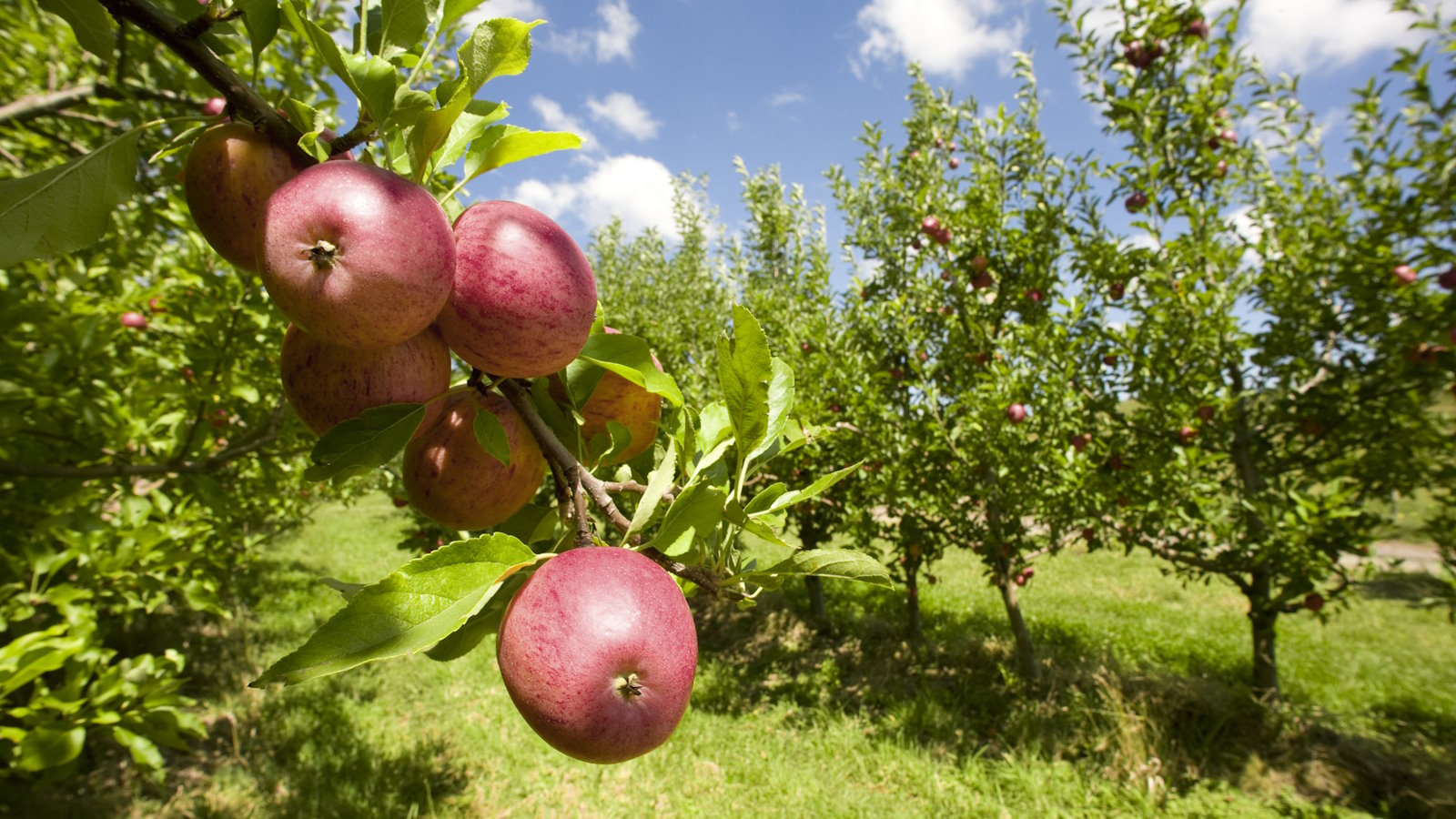

Pruning fruit trees is an essential task that should lead to healthier and more productive trees, and rewards you with a bumper crop each and every year. But it is not a task that comes without its intricacies.
The truth is that many people can be daunted by pruning fruit trees, however, once you know the mistakes to avoid then it all becomes clearer. It is important to remember there are specific techniques required for pruning different types of fruit trees, and this includes the time of year they are cut.
I spent many years as a professional gardener, including periods as a specialist kitchen gardener. This means I have looked after and pruned a wide range of fruit trees, ranging from those growing in a dedicated orchard to inside restored Victorian glasshouses. Getting the timing and technique correct when it comes to pruning fruit trees will help you get a bountiful harvest of quality fruit year-after-year.
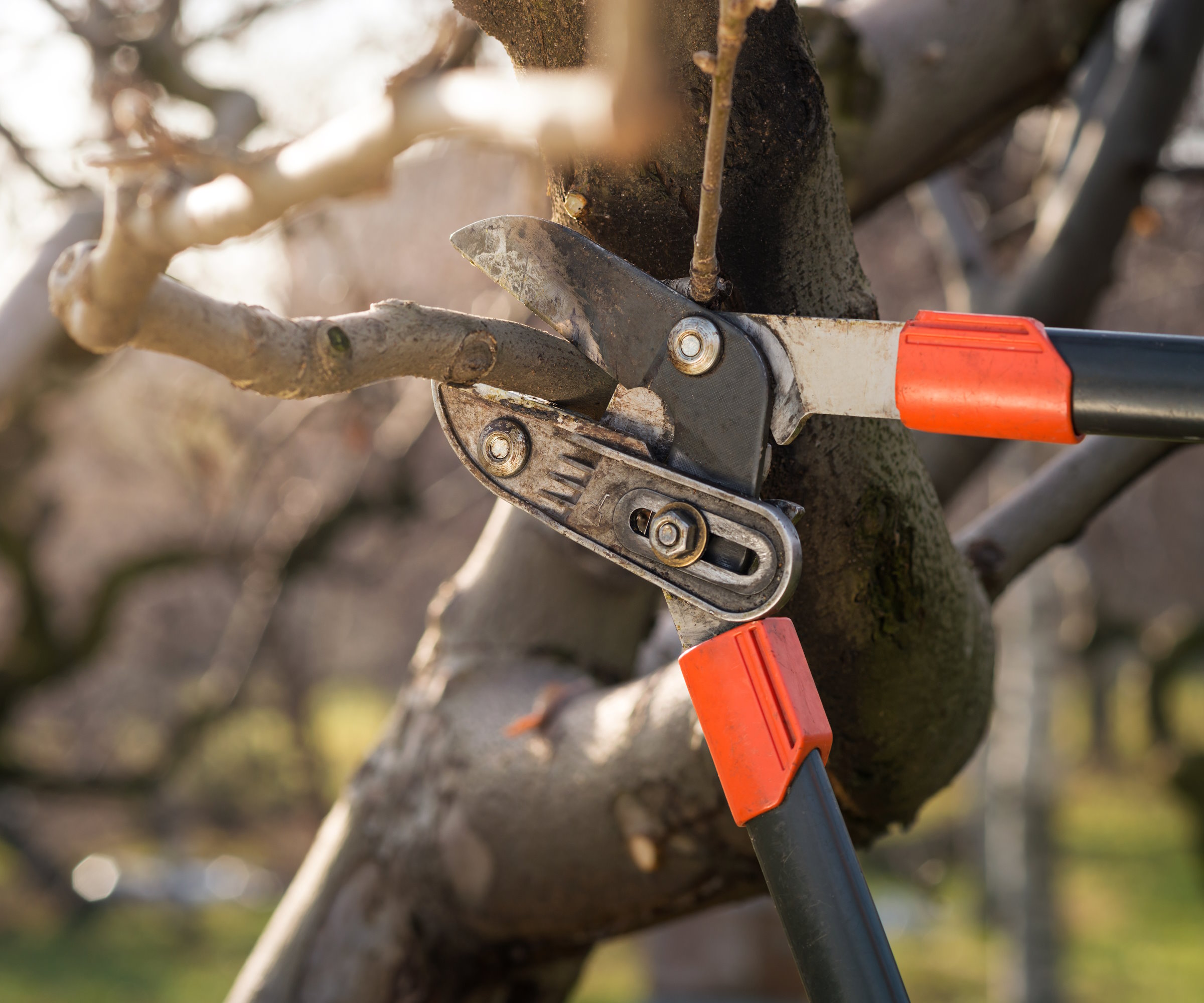
Pruning is an important task for healthy and productive fruit trees
Tips for proper fruit tree pruning
All of the best fruit trees will need pruning to create their form, and keep them healthy and productive. This will be the case wherever they are growing, whether that is in a large orchard or you have fruit trees growing in pots. I've identified six fruit tree pruning mistakes to avoid and sought expert tips for how to cut correctly so as to not fall foul of any issues.
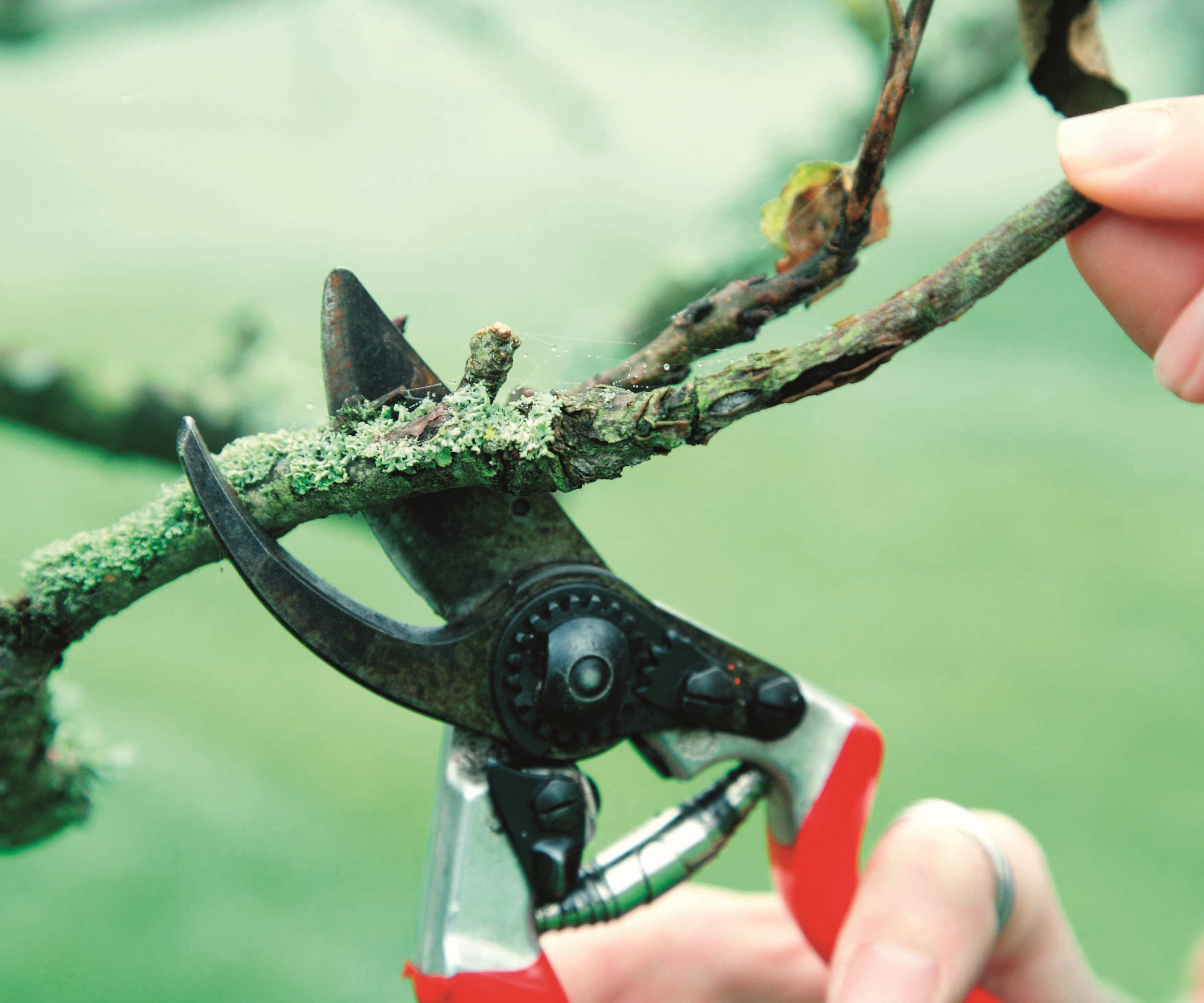
Annual pruning will benefit all fruit trees
1. Pruning at the wrong time
It would be an error to assume that all fruit trees you can choose for your garden will require pruning at the same time of year. In terms of when to prune fruit trees, different types need pruning at different times of the year.
For example, you prune apple trees and pear trees in winter, during their dormancy once the leaves have fallen. However, stone fruit trees, such as peaches, plums, cherries, and apricots, need to be pruned in spring or summer. These are pruned when they are in active growth to avoid diseases, like silver leaf, whose spores are active in winter and can enter pruning cuts during their dormancy period.
If you prune fruit trees too soon, such as in fall when the weather is still warm, then they can put out a spurt of new growth that won't have time to harden off. This new growth will be susceptible to damage from winter frosts.
Furthermore, some fruit trees, such as fig trees, will bleed sap if they are pruned during the summer. This is best avoided as it can stress the tree and leave it at an increased risk of disease.
Angela Slater, gardening expert at Haye’s Garden World, says that ‘open wounds’ caused by cutting at the wrong time of year are going to be highly susceptible, adding: ‘The longer the wounds take to heal over, the more likelihood there is of them being the entry point for pathogens.’
The final potential problem from pruning at the wrong time is that it causes fruit trees to put on vegetative growth, rather than putting the energy into producing fruit. This will impact on the final harvest you get from the trees.

Angela Slater holds a degree in Conservation and Land Management and has worked for Hayes Garden World, in various guises, for 33 years. Angela is a regular contributor to many national, lifestyle and garden trade publications.
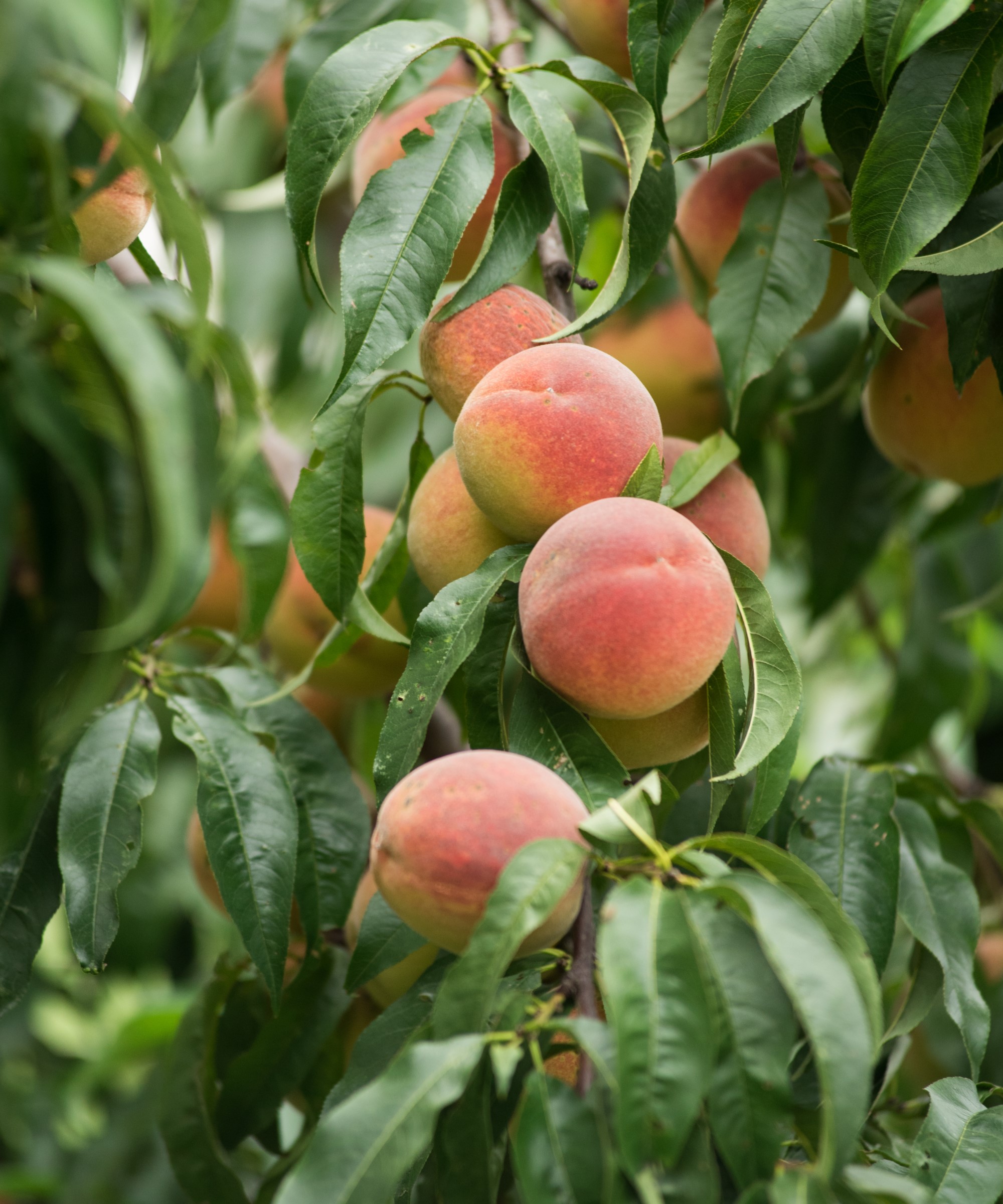
Peach trees need pruning when they are growing, rather than in winter
2. Pruning off too much
A very common pruning mistake is when we get a bit overzealous and remove too much material from the fruit tree. Unfortunately, this may stress the tree and it may struggle to recover or to photosynthesis enough.
Tom Kitching, executive chairman at Henchman Ladders, warns that the range of problems from over pruning include ‘reduced fruit production, weakened tree structure, and the potential for a slower recovery and a delayed harvest.’
But that is not all, and he adds: ‘Over-pruning may even expose the tree's trunk and remaining branches to excessive sunlight, which can lead to sunscald and sunburn, ultimately proving fatal for the tree.’
When you are pruning any fruit tree, it is better to adhere to the one-third pruning rule and not remove any more than a third of the wood at any time. If you do need to renovate an overgrown or neglected tree, it is better to do it over the course of a few years rather than be more drastic with the pruning saw.
A vigorous prune is not only capable of removing lots of fruiting branches - which will dramatically affect a harvest - but can cause a fruit tree to respond by putting on a spurt of long and weak branches. This spindly growth will be unable to carry the weight of a heavy crop of fruit, which then risks those branches snapping and causing entry points for pests and diseases.
Tom Kitching is the Executive Chairman at Henchman Ladders and an expert on all things pruning. Henchman has been a pioneer in garden ladders and safe hedge-cutting platforms since 1994.
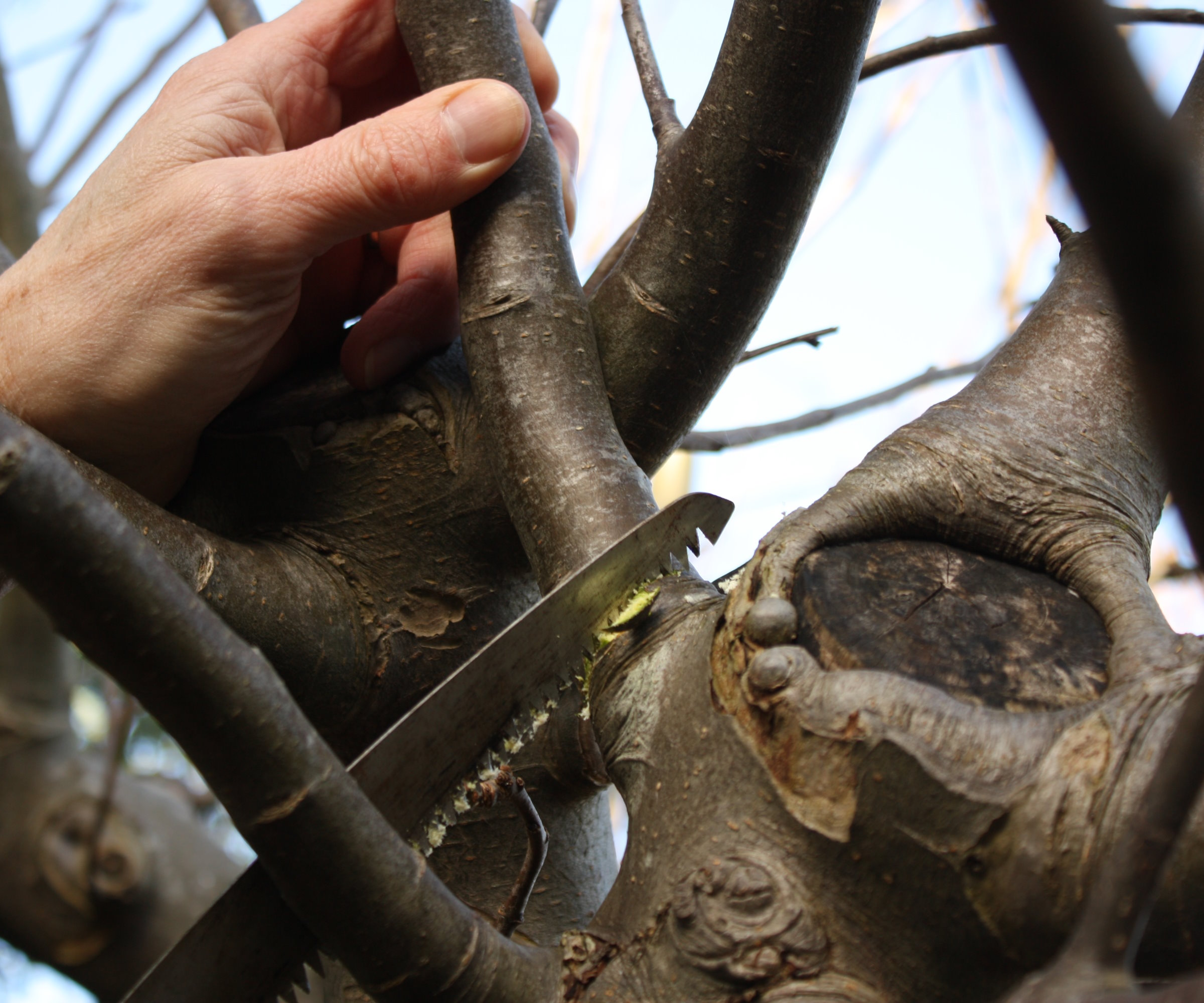
Avoid removing more than a third of the fruit tree each year
3. Not making the right cuts
The way you prune is important to ensuring the long-term health of your fruit tree. A common mistake is to make flush cuts. These types of cuts will not properly heal and can get infected, potentially causing issues to the trunk.
It is recommended to prune limbs back to the collar, which is a protrusion that is present where the branch meets a main branch or the tree trunk. Done properly and the tree will be able to callus over the pruning cut quickly. A flush cut will remove the branch collar completely and leave a large wound that is unlikely to fully callus.
A good cut should be around a third of an inch above the collar and done without damaging the branch collar itself. As well as cutting too flush, leaving too much of a stub can also cause issues. Leaving too much of a dead branch will cause it to decay backwards through the root collar itself.
When it comes to trimming large branches, it is often better to remove the branch in sections, rather than trying to cut it all the way back in one go. Cutting it in bits reduces the weight and can prevent the branch removing sections of bark when it splits from the tree.
Damaging the bark will leave bare patches of wood that can be susceptible to pests and diseases. Any disease or decay caused by unsuitable cuts has the potential to harm the tree’s health and even potentially kill the fruit tree.
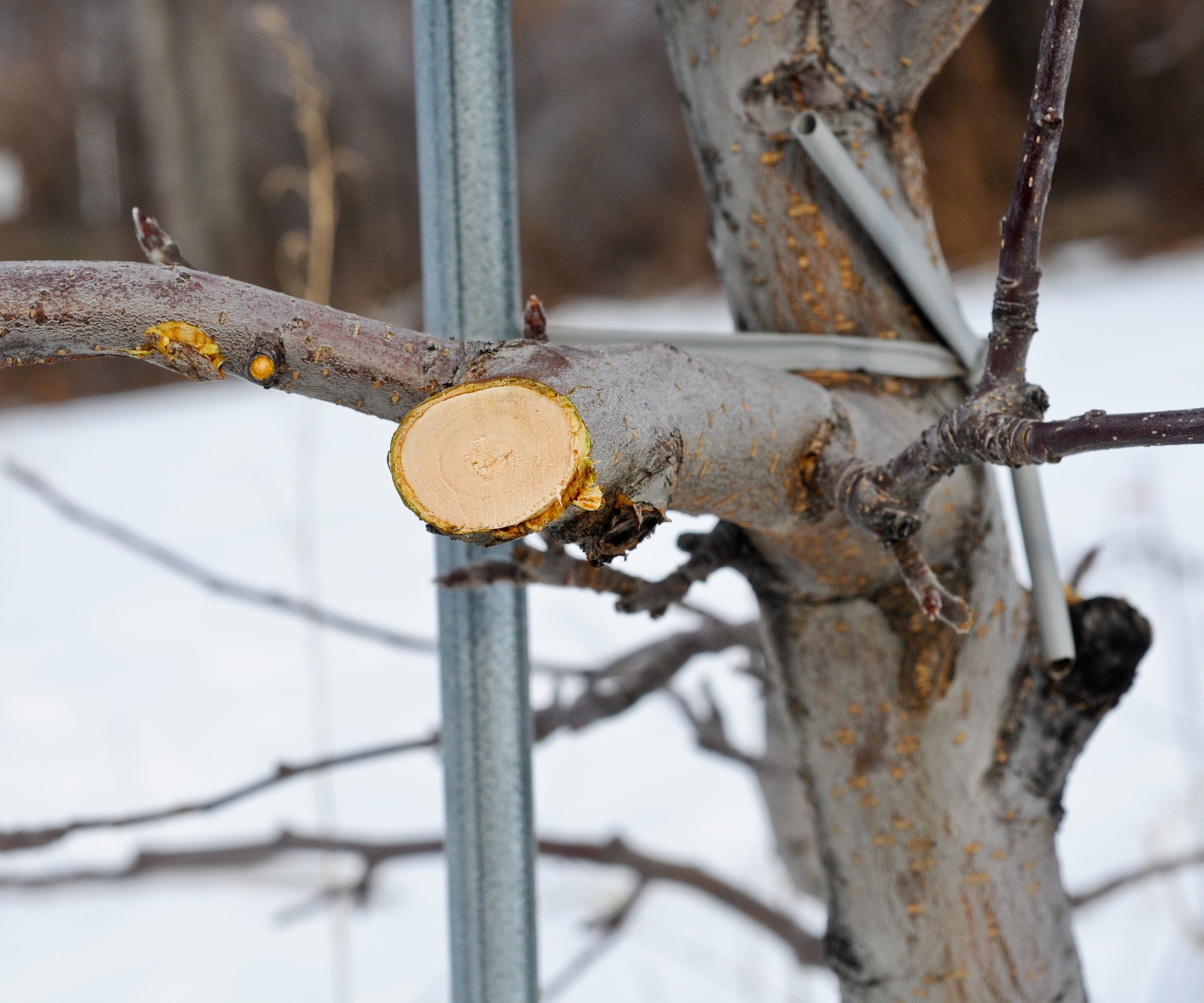
Cuts must be clean and done without damaging the bark
4. Using dirty tools
A fundamental rule has to be that you use clean and sharp garden tools to do any pruning. This includes clean pruning shears, loppers, or pruning knives.
Blunt and rusty tools will make jagged and frayed cuts to branches, and risk shredding the bark too. These cuts can take much longer to heal over and leave trees increasingly vulnerable to pests and fungal diseases.
Tools can be kept sharp using simple pocket-sized sharpening stones, such as this one at Amazon, while sterilizing wipes can be used to keep tools disease-free.
Sanitizing equipment is important to avoid spreading diseases around the garden. If your tools have been used to cut diseased plant material previously, then it can spread those pathogens around and infect the fruit trees.
It does not need to be time-consuming to clean tools and doing it regularly will keep the task quick and simple. It's a good idea to clean and sharpen tools after any use, and this will keep your garden tools in top condition and give them a longer lifespan.
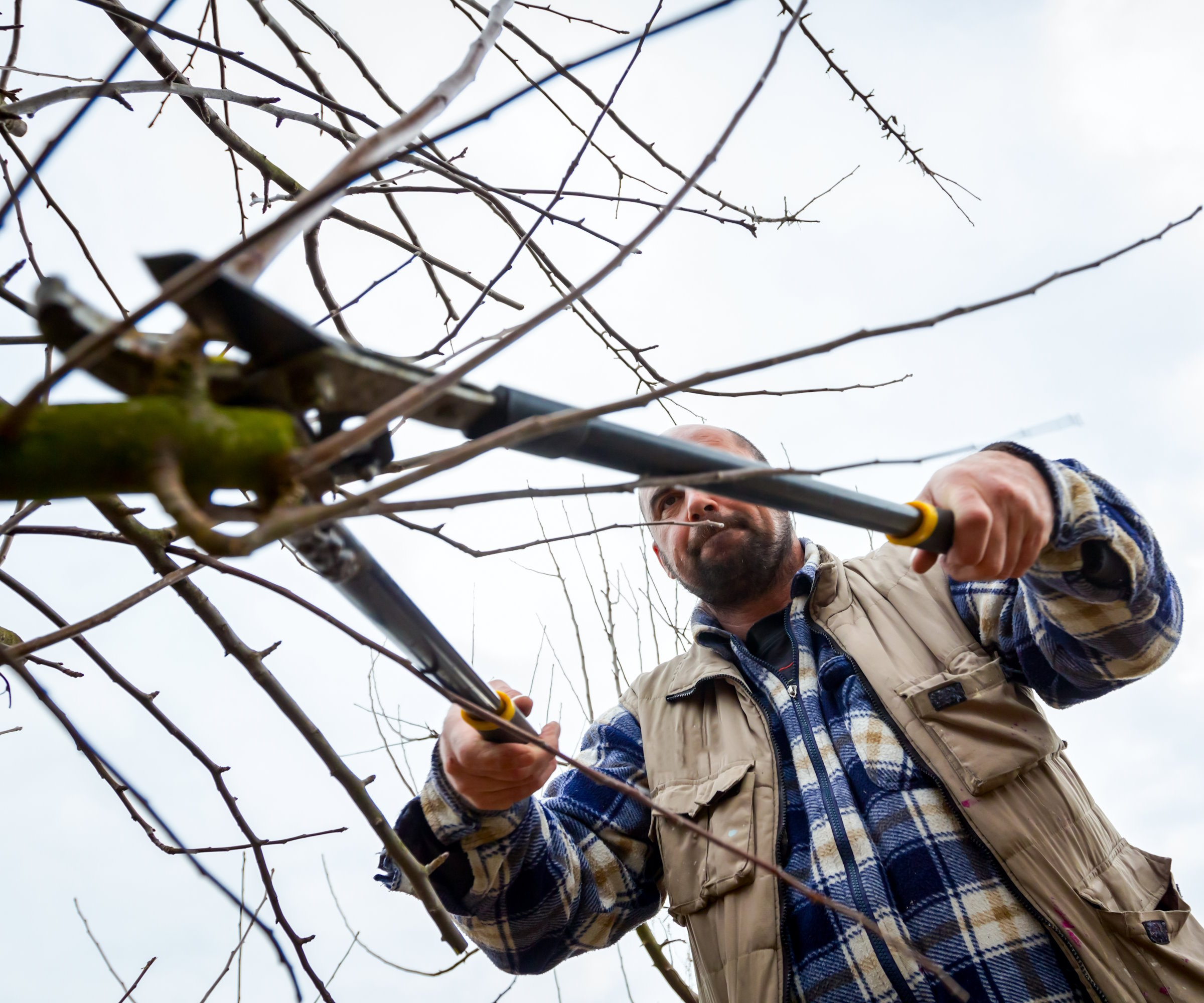
Loppers should be sharp when pruning fruit trees
5. Using the wrong tools
It is important to use the right tools for the right pruning job. As we mentioned, the main tools that home gardeners will use for pruning fruit trees will be pruning shears, a pair of loppers, and a pruning saw. Each of these tools are best-used for specific sizes of wood and using the wrong one can cause unnecessary damage to the tree that it may struggle to heal over.
For example, pruning shears are best for wood that is up to an inch thick, loppers can cut wood up to two inches thick, and a pruning saw with a toothed blade can be used for branches thicker than two inches. The exact specifications for each tool will depend on the brand and type of tool you use, but always check manufacturers recommendations for the maximum thickness of branch they can cut.
It may require professional tree surgeons with mechanical tools to cut the thickest wood, to avoid doing damage by using the wrong tools.
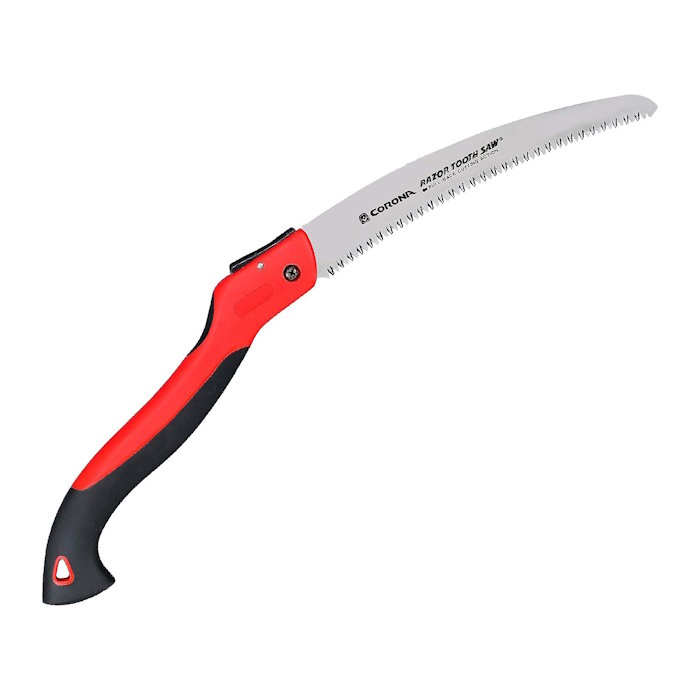
This foldable pruning saw has a 10" blade that is ideal for cutting 5" - 6" diameter, small to medium, branches. It features razor tooth saw technology that cuts twice as fast as a conventional blade. It is an ideal tool for pruning fruit trees.
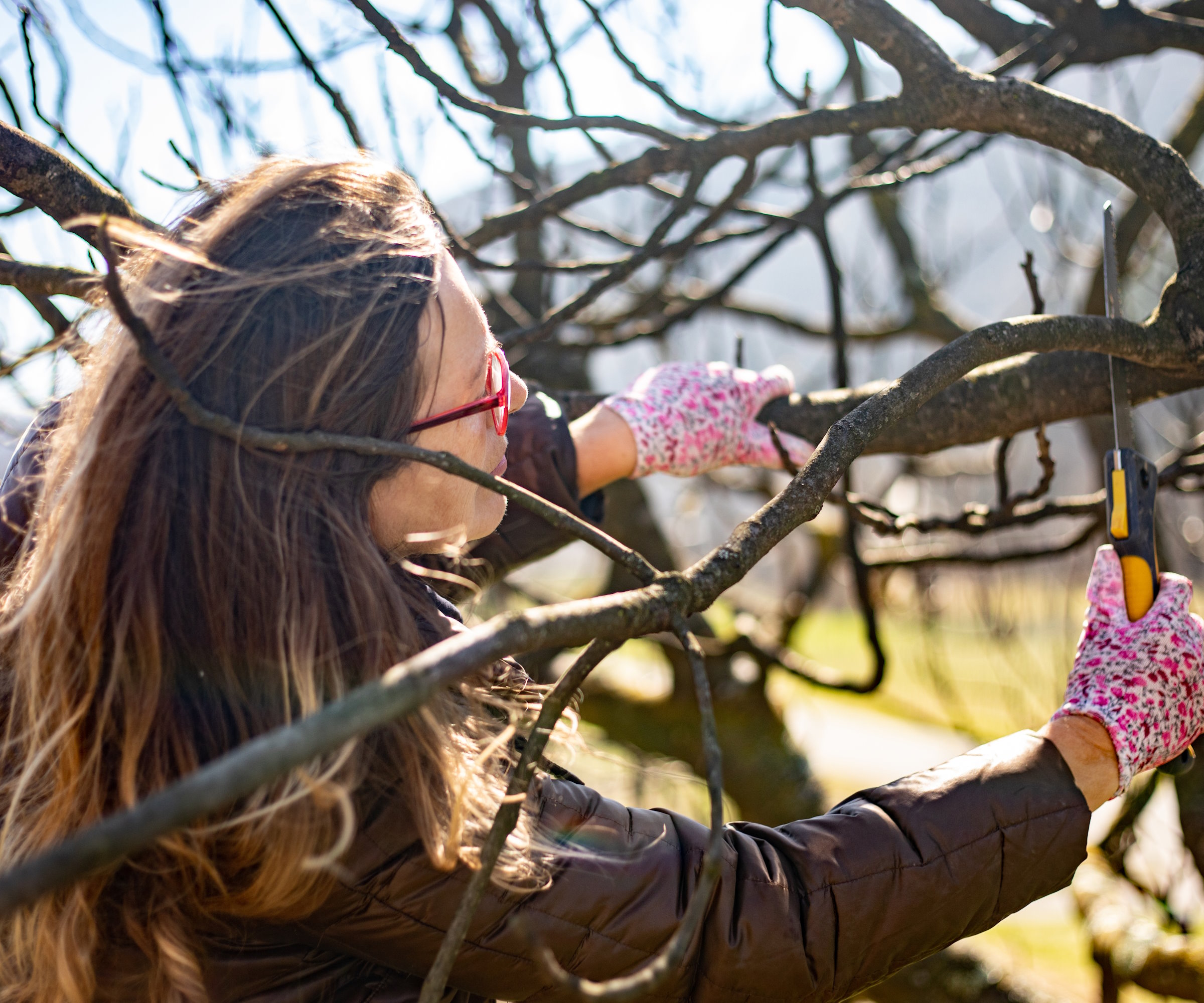
A pruning saw should be used for thick branches
6. Not pruning at all
Not pruning fruit trees and leaving them to grow unchecked can cause many potential issues. They can grow at unwanted angles and any dead or damaged branches left on the tree are not only a safety hazard if they fall, but can also encourage pests and disease.
Fruit trees can become tall and unwieldy if left and need pruning to manage their overall size, along with promoting the formation of fruit. An overgrown tree will have its fruit production limited and the level of cropping is likely to drop year-on-year. Congested canopies will not fruit efficiently and it can be a case of any fruits that do grow are tricky to get to in order to harvest. Not pruning will end up with the tree producing fruit on branches that are high out of reach.
An unpruned tree can also be harbouring lots of dead and diseased branches, which can spread pathogens throughout the rest of the tree. With a congested canopy not allowing for lots of air circulation, the conditions can be rife for fungal issues to take hold.
FAQs
What happens if you prune fruit trees too late?
Many fruit trees need pruning during dormancy in the winter and pruning too late will be an inefficient use of the tree’s energy. If you leave it until they are growing, energy will have already gone into branches that are going to be removed.
Also, the tree will respond to the late pruning by putting its energy into new growth, rather than using that energy for flowering and fruiting. Pruning fruit trees too late can stress them - often at a time when they can already be stressed by heat or drought - and result in new growth that doesn’t harden off by winter and can be damaged by frosts.
There are many fruit trees suitable for small gardens. You can buy popular types of fruit trees on dwarf rootstocks to restrict their growth, and their ultimate height and spread can be managed by regular pruning. This makes them suitable for growing as part of any small backyard ideas, so you can reap the rewards of homegrown fruit in a smaller space.
Sign up to the Homes & Gardens newsletter
Design expertise in your inbox – from inspiring decorating ideas and beautiful celebrity homes to practical gardening advice and shopping round-ups.

Drew’s passion for gardening started with growing vegetables and salad in raised beds in a small urban terrace garden. He has worked as a professional gardener in historic gardens and specialises in growing vegetables, fruit, herbs, and cut flowers as a kitchen gardener. That passion for growing extends to being an allotmenteer, garden blogger, and producing how-to gardening guides for websites. Drew was shortlisted for the New Talent of the Year award at the 2023 Garden Media Guild Awards.
-
 This once-dated kitchen is now a timeless space with the coziest details – and its the classic color palette that's made it a chic, welcoming space
This once-dated kitchen is now a timeless space with the coziest details – and its the classic color palette that's made it a chic, welcoming spaceWarming colors and natural materials combine to create this enduringly classic kitchen scheme
By Molly Malsom Published
-
 How to grow crepe myrtle in pots – and transform even the smallest of yards with dazzling flowers this summer
How to grow crepe myrtle in pots – and transform even the smallest of yards with dazzling flowers this summerGrowing crepe myrtles in pots will inject splashes of brilliant color into your outside space
By Thomas Rutter Published